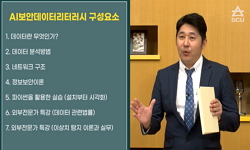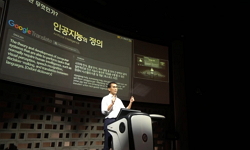Prediction of semen's fertilizing ability used in artificial insemination (AI) is one of very important factors on pig reproductive performance. In vitro fertilization (IVF) has been used for indirect evaluation of sperm's fertilizing ability and it h...
http://chineseinput.net/에서 pinyin(병음)방식으로 중국어를 변환할 수 있습니다.
변환된 중국어를 복사하여 사용하시면 됩니다.
- 中文 을 입력하시려면 zhongwen을 입력하시고 space를누르시면됩니다.
- 北京 을 입력하시려면 beijing을 입력하시고 space를 누르시면 됩니다.

Effects of Sperm Motility on In Vitro Production of Embryo and Correlation with Mitochondria Amount in Pig
한글로보기https://www.riss.kr/link?id=A104394104
-
저자
정기화 (경남과학기술대학교) ; In-Cheul Kim (National Institute of Animal Science) ; Jung-Ho Son (Noah Biotech Inc.)
- 발행기관
- 학술지명
- 권호사항
-
발행연도
2010
-
작성언어
English
-
주제어
sperm motility ; viability ; mitochondria ; AI ; IVF
-
등재정보
KCI등재
-
자료형태
학술저널
- 발행기관 URL
-
수록면
263-266(4쪽)
-
KCI 피인용횟수
0
- 제공처
-
0
상세조회 -
0
다운로드
부가정보
다국어 초록 (Multilingual Abstract)
Prediction of semen's fertilizing ability used in artificial insemination (AI) is one of very important factors on pig reproductive performance. In vitro fertilization (IVF) has been used for indirect evaluation of sperm's fertilizing ability and it has been showed as highly correlated index. In swine industry, increasing interest in preservation of boar semen raises questions on the sperm motility from semen used in commercial AI centers. Mitochondria in sperm mid-piece generate the energy to support motility and could be an explanation of impaired fertility. Objective of this study was to suggest usable sperm motility to farms in measuring the effect of sperm motility and sperm abnormality on in vitro production of embryo in which sperm's fertilizing ability can be determined indirectly. Semen samples were provided from local AI center and used within 3 days after collection. Semen samples were divided by 4 different motile groups (>70%; 61~70%; 51~60%; <50%) using CASA (computer-assisted sperm analysis) on the days of IVF. Developmental rate to the blastocyst stage from over 61% motile sperm group showed significantly higher rate than below 60% motile sperm group (16.5 ± 0.7~18.4 ± 0.8% vs 6.3 ± 0.8~11.5 ± 0.7%, p<0.05). In experiment to determine the relationship between sperm motility and viability and abnormality, over 61% motile sperm groups showed significantly higher viability rate compared to below 60% motile sperm groups (84.8 ± 4.0~88.1 ± 4.0% vs 69.1 ± 4.0~74.2 ±4.0%, p<0.05). On the other hand, morphological sperm abnormality showed significantly higher in over 70% motile sperm group (10.2 ± 2.2 vs 16.0 ± 2.2~21.0 ± 2.2%, p<0.05). In experiment to find the correlation between sperm motility of 4 different motile groups and amount of mitochondria, lower motility group also showed lower level of mitochondria (p<0.05). The mitochondria parameter used in this study showed another possibility to differentiate the sperm motility. Taken together, because below 60% motile semen used in AI reduce the fertility, AI centers should provide the over 60% motile sperm to the farms at the time of AI.
참고문헌 (Reference)
1 Parinaud J, "Validation of a scoring method predicting the in-vitro fertilizing ability of human spermatozoa" 19 : 18-22, 1996
2 Ruiz-Sanchez AL, "The predictive value of routine semen evaluation and IVF technology for determining relative boar fertility" 66 : 736-748, 2006
3 Gadea J, "Sperm factors related to in vitro penetration of porcine oocytes" 54 : 1343-1357, 2000
4 Gadea J, "Sperm factors related to in vitro and in vivo porcine fertility" 63 : 431-444, 2005
5 Zhang BR, "Relationship between embryo development in vitro and 56-day non-return rates of cows inseminated with frozen-thawed semen from dairy bulls" 48 : 221-231, 1997
6 Zeng WX, "Protection of boar spermatozoa from cold shock damage by 2-hydroxypropyl-beta-cyclodextrin" 55 : 617-627, 2001
7 Kim IC, "Practical status of commercial boar semen used in pig AI" 110-, 2008
8 Berger T, "Porcine sperm fertilizing potential in relationship to sperm functional capacities" 44 : 231-239, 1996
9 Flowers WL, "Management of boars for efficient semen production,J.Reprod.Fertil.Suppl.52:67-78" 52 : 67-78, 1997
10 Foxcroft GR, "Identifying useable semen" 70 : 1324-1336, 2008
1 Parinaud J, "Validation of a scoring method predicting the in-vitro fertilizing ability of human spermatozoa" 19 : 18-22, 1996
2 Ruiz-Sanchez AL, "The predictive value of routine semen evaluation and IVF technology for determining relative boar fertility" 66 : 736-748, 2006
3 Gadea J, "Sperm factors related to in vitro penetration of porcine oocytes" 54 : 1343-1357, 2000
4 Gadea J, "Sperm factors related to in vitro and in vivo porcine fertility" 63 : 431-444, 2005
5 Zhang BR, "Relationship between embryo development in vitro and 56-day non-return rates of cows inseminated with frozen-thawed semen from dairy bulls" 48 : 221-231, 1997
6 Zeng WX, "Protection of boar spermatozoa from cold shock damage by 2-hydroxypropyl-beta-cyclodextrin" 55 : 617-627, 2001
7 Kim IC, "Practical status of commercial boar semen used in pig AI" 110-, 2008
8 Berger T, "Porcine sperm fertilizing potential in relationship to sperm functional capacities" 44 : 231-239, 1996
9 Flowers WL, "Management of boars for efficient semen production,J.Reprod.Fertil.Suppl.52:67-78" 52 : 67-78, 1997
10 Foxcroft GR, "Identifying useable semen" 70 : 1324-1336, 2008
11 Lindsay G, "Flowcytometric evaluation of sperm parameters in relation to fertility potential" 63 : 445-457, 2005
12 Gibson CD, "Examining for breeding soundness in boars" 84 : 200-, 1989
13 Pena, F, "Antioxidant supplementation in vitro improves boar sperm motility and mitochondrial membrane potential after cryopreservation of different fractions of the ejaculate" 78 : 85-98, 2003
14 Selles E, "Analysis of in vitro fertilizing capacity to evaluate the freezing procedures of boar semen and to predict the subsequent fertility" 38 : 66-72, 2003
동일학술지(권/호) 다른 논문
-
Serous Fat Atrophy of a Reticulated Giraffe (Giraffa camelopardalis)
- 韓國受精卵移植學會
- Yong, Hwan-Yul
- 2010
- KCI등재
-
- 韓國受精卵移植學會
- Yong, Hwan-Yul
- 2010
- KCI등재
-
- 韓國受精卵移植學會
- Yong, Hwan-Yul
- 2010
- KCI등재
-
- 韓國受精卵移植學會
- Lee, Yong-Seung
- 2010
- KCI등재
분석정보
인용정보 인용지수 설명보기
학술지 이력
| 연월일 | 이력구분 | 이력상세 | 등재구분 |
|---|---|---|---|
| 2027 | 평가예정 | 재인증평가 신청대상 (재인증) | |
| 2021-01-01 | 평가 | 등재학술지 유지 (재인증) |  |
| 2019-03-14 | 학회명변경 | 한글명 : 한국수정란이식학회 -> 사단법인 한국동물생명공학회영문명 : The Korean Society Of Embryo Transfer -> The Korean Society of Animal Reproduction and Biotechnology |  |
| 2019-03-12 | 학술지명변경 | 한글명 : 한국수정란이식학회지 -> 한국동물생명공학회지외국어명 : Korean Journal of Embryo Transfer -> Journal of Animal Reproduciton and Biotechnology |  |
| 2018-01-01 | 평가 | 등재학술지 선정 (계속평가) |  |
| 2017-12-01 | 평가 | 등재후보로 하락 (계속평가) |  |
| 2013-01-01 | 평가 | 등재학술지 유지 (등재유지) |  |
| 2010-01-01 | 평가 | 등재학술지 유지 (등재유지) |  |
| 2007-01-01 | 평가 | 등재학술지 선정 (등재후보2차) |  |
| 2006-01-01 | 평가 | 등재후보 1차 PASS (등재후보1차) |  |
| 2005-01-01 | 평가 | 등재후보 1차 FAIL (등재후보1차) |  |
| 2003-07-01 | 평가 | 등재후보학술지 선정 (신규평가) |  |
학술지 인용정보
| 기준연도 | WOS-KCI 통합IF(2년) | KCIF(2년) | KCIF(3년) |
|---|---|---|---|
| 2016 | 0.1 | 0.1 | 0.1 |
| KCIF(4년) | KCIF(5년) | 중심성지수(3년) | 즉시성지수 |
| 0.09 | 0.08 | 0.312 | 0 |




 KCI
KCI






